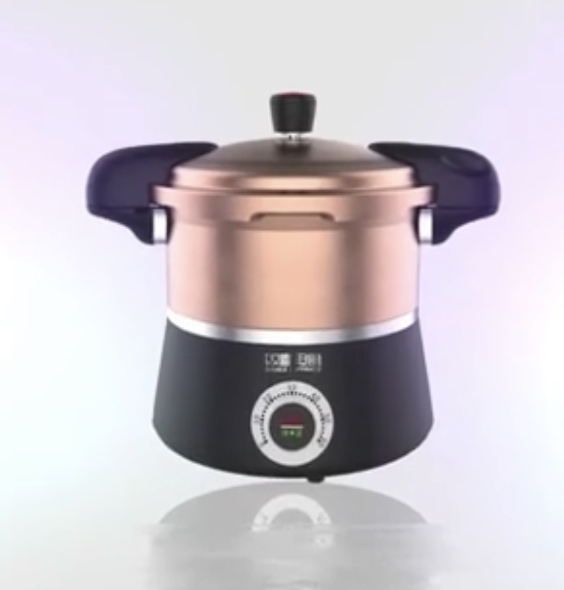Snapshot Details
- Brand: Unlimitive
- Product Type: Electric Pressure Cooker
- Model Number: EPC01
- Total Pot Capacity [L]: 3.5
- Power Supply Type: AC
- Pressure Cooking: Average Temperature [C]: 111.8
- Total Energy Consumption per Cooking Session [Wh]: 804.4
Product Information
- Brand
Product brand name as listed on consumer-facing materials, such as product package, nameplate, or product specification sheet Unlimitive
- Product Type Electric Pressure Cooker
- Model Number EPC01
- Total Pot Capacity [L] 3.5
- Power Supply Type AC
- Manufacturer Unlimitive LLP
- Warranty [months] 12
- Rated Input Power [W] 804.4
- Rated Input Voltage [V] 220
- Frequency [Hz] 50
- Power Factor [%] 99.98%
Heating
- Heating: Max Water Temperature [C]
Maximum temperature of the steam/water inside the pot during the heating phase. 112.3
- Heating: Time to Reach Cooking Temperature [mins]
Time required for the product to reach pressure cooking phase. 20.66
- Heating: Average Power Draw [W]
Average power drawn by the product during the heating phase. 778.8
- Heating: Specific Energy Consumption [kJ/g] 0.556
- Heating: Thermal Efficiency from 30C to 90C [%]
Efficiency of converting electrical energy into heat, measured in the cooking water from 30-90C during the heating phase. 73.4%
Pressure Cooking
- Pressure Cooking: Average Temperature [C]
Average temperature of the steam/water inside the cooking pot during the pressure cooking phase. 111.8
- Pressure Cooking: Average Pressure [kPa]
Average pressure inside the cooking pot during the pressure cooking phase 66.4
- Pressure Cooking: Temperature Range [C] 1.1
- Pressure Cooking: Average Power [W]
Average power drawn by the product during the pressure cooking phase. 782.4
Saute Cooking
- Saute: Time to Heat [mins]
Time required for the oil to reach steady-state sauté cooking phase (note: not all products reached 140°C minimum effective temperature required for sauté cooking). 4.64
- Saute: Max Saute Temperature [C]
Maximum temperature of the oil inside the cooking pot during the sauté cooking phase. 144.3
- Saute: Min Saute Temperature [C]
Minimum temperature of the oil inside the cooking pot during the sauté cooking phase. 109.6
- Saute: Temperature Stability [%]
Percentage of time that the oil temperature was between 140-180°C (ideal sauté cooking temperature boundaries). 36%
- Saute: Average Power [W] 286.4
Energy Consumption
- Heating: Energy Consumption [Wh] 270.1
- Pressure Cooking: Energy Consumption Over 30 Minutes [Wh]
Energy consumed by the product during the pressure cooking phase. 391.2
- Saute: Energy Consumption Over 30 Minutes [Wh]
Energy consumed by the product during the sauté cooking phase as calculated by the average power draw during the 30-minute test. 143.2
- Total Energy Consumption per Cooking Session [Wh] 804.4
Cool Down
- Average Cooling Rate [W] 145.1
- Cooling Rate per Surface Area [W/m2] 1127.6
Low/High Voltage Performance
- Low Voltage: Is the product able to pressurize during low-voltage testing? [yes/no] Yes
- Low Voltage: Time to Pressurize [min] 48.70
- Low Voltage: Average Saute Power [W] 265.3
- Low Voltage: Max Saute Temperature [C] 140.7
- High Voltage: Could the product operate at nominal voltage after high-voltage test? [yes/no] Yes
Quality
- Ingress Protection Rating S-2
- Boil-Over Protection [yes/partial/no] No
- Interior Spill Protection [yes/partial/no] No
- External Workmanship [good/satisfactory/needs improvement/poor] Satisfactory
- Internal Workmanship [good/satisfactory/needs improvement/poor] Needs Improvement
Circuitry
- Shock Hazard - Resistance [ohms] 0.75
- Shock Hazard [pass/fail] Pass
- Front Panel Quality [excellent/good/satisfactory/needs improvement/poor] Satisfactory
- Circuitry Quality [good/satisfactory/needs improvement/poor] Poor
- Notes About Circuitry Sharp edges next to wires. Several wires have frayed sheaths. One frayed location is next to a sharp edge. One wire connection uses electrical tape for insulation. Some wires are fiber-coated. Some are plastic coated.
Exterior Temperature
- Maximum Handle Temperature [C] 65.9
- Handle Temperature Rating [good/satisfactory/needs improvement/poor] Poor
- Maximum Body Temperature [C] 113.9
- Body Temperature Rating [good/satisfactory/needs improvement/poor] Poor
Tipping Test
- Tipping Angle [degrees] 41.2
Safety Mechanisms
- Lid Lock Yes
- Automatic Pressure Control No
- Manual Pressure Release Valve No
- Spring-Loaded Pressure Relief Yes
- Thermal Fuse Yes
- Anti-Clog Device Yes
Safety Device Test
- Is there a safety device separate from the pressure control device? Yes
- Is it possible to fit lid incorrectly? Yes
- Does device prevent opening at pressure > 4 kPa? Yes (but lid can be partially turned)
- Are there multiple safety devices that successfully released pressure before it surpassed 300 kPa? Yes
- Notes About Safety Device Test N/A
Usability
- Is there a visual or acoustic signal to indicate operation? No
- Does the manual decompression device effectively discharge steam? Yes
- Is steam release device hazardous to user? No
- Notes About Operation Steam released from weighted valve is directed straight onto the handles.
Labeling and Documentation
- Is there safety labeling? Yes
- User Manual Rating N/A
Sampling and Testing Information
- Test Completion Date [MM/DD/YYYY] 1/26/2021
- Test Laboratory Name Colorado State University
Contact Information
- Company Contact prabhu@butterflyindia.com
- Website N/A
Awards
- Global LEAP Awards No
